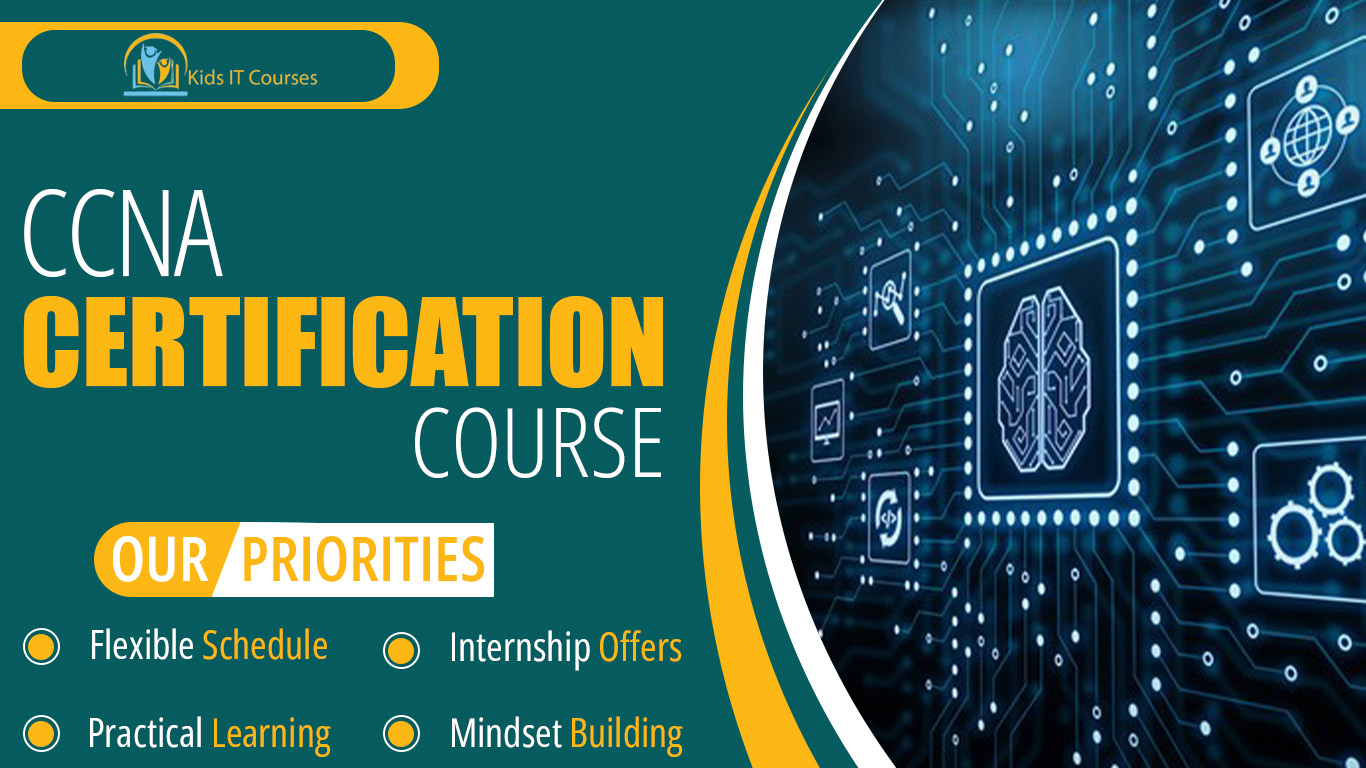
CCNA Course for Kids
Definition
• Teaches kids how computers talk to each other.
• Explains how the internet works. Kids understand how data travels between computers.
• Shows how to set up networks. They learn to connect computers, routers, and switches.
• Covers network safety. Kids understand how to protect information online.
• Teaches problem-solving for network issues. They learn to fix connection problems.
• Builds confidence with technology. Kids practice with real network tools and ideas.
• Prepares them for tech careers. They get early skills for future networking jobs.
Importance
• Teaches how computer networks work. Kids learn how devices connect and share data.
• They know how the internet sends and receives information.
• Builds problem-solving skills. Kids learn to fix network connection issues.
• Prepares for tech jobs. Networking skills are needed in many careers.
• Increase logical thinking. They learn to plan and set up networks step-by-step.
• Kids understand routers, switches, and other network tools.
• It helps in learning advanced networking in the future.
Advantages for Freelancing
• They learn about networks and internet connections.
• Improves problem-solving skills. Kids figure out how to fix network issues.
• Gives basic knowledge of internet safety. They understand how to protect data online.
• Prepares them for future tech jobs. Network skills are in high demand everywhere.
• Kids learn step-by-step network setup and repair.
• Encourages interest in technology. They get excited about how the internet works.
• Increases confidence in using technology. Kids feel skilled and comfortable with networks.
Session 1 : What is CCNA and Why Networking Matters
Introduction to CCNA and its role in networking careers
Real-life example: How your devices connect to the internet
Basics of networking: devices, IP addresses, data transfer
Activity: Draw your home or office network
Session 2 : Network Components and Devices
Routers, switches, hubs, cables, and access points
Difference between LAN, WAN, MAN, and PAN
Real-life example: School or office network setup
Activity: Identify network components in your surroundings
Session 3 : IP Addressing and Subnetting
Understanding IPv4 and IPv6
How subnetting helps manage networks
Real-life example: Assigning IPs in a school lab
Activity: Practice IP subnetting with simple exercises
Session 4 : Routing and Switching Basics
Introduction to static and dynamic routing
Routing protocols: RIP, EIGRP, OSPF
Switching concepts: MAC address tables, VLANs
Activity: Simulate routing between two networks
Session 5 : Wireless, Security & Access Control
Basics of wireless networks (Wi-Fi standards, SSID, encryption)
Network security: firewalls, ACLs, VPNs
Real-life example: Protecting a home Wi-Fi network
Activity: Create a network security checklist
Session 6 : Network Troubleshooting Techniques
Using commands like ping, traceroute, ipconfig
Common issues: DNS failures, IP conflicts, hardware errors
Real-life example: Diagnosing a slow or disconnected network
Activity: Troubleshoot a sample network scenario
Session 7 : Hands-On Labs and Cisco Packet Tracer
Introduction to Cisco Packet Tracer simulation tool
Building and configuring simple networks
Real-life example: Creating a working model of a small business network
Activity: Use Packet Tracer to connect PCs, routers, and switches
Session 8 : Certification & Career Pathways
CCNA exam format, topics, and preparation tips
Career opportunities: network technician, administrator, engineer
Real-life example: Journey of a certified network professional
Activity: Plan your study schedule for CCNA exam
Bonus Materials
Command-line cheat sheet
Subnetting practice workbook
Cisco Packet Tracer download and tutorials
List of CCNA interview questions
Certificate of Completion for CCNA Fundamentals
